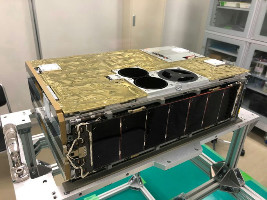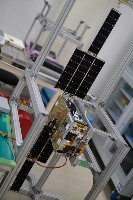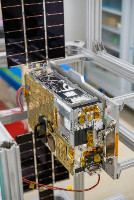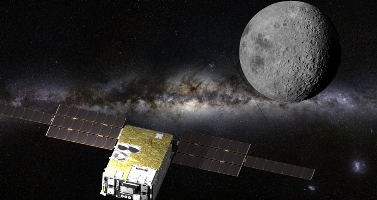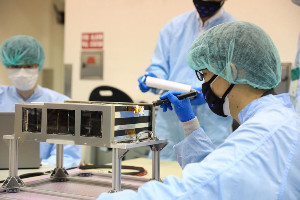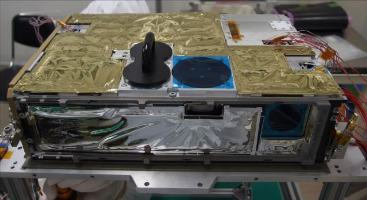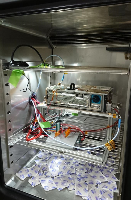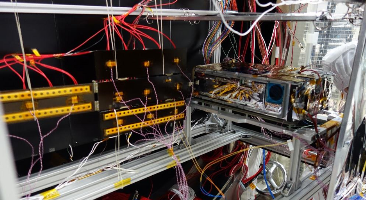| Satellite name | EQUULEUS (Equilibrium Lunar-Earth point 6U Spacecraft) |
|---|---|
| Spacecraft type | CubeSat |
| Units or mass | 6U |
| Status | Was operational until 2023-05-18 (Likely tumbling and limited power as per SmallSat 2024 paper) |
| Launched | 2022-11-16 |
| NORAD ID | ? (Not catalogued?) |
| Deployer | CSD (Canisterized Satellite Dispenser) [Planetary Systems Corporation] |
| Launcher | SLS (Space Launch System) (Artemis-1) |
| Entity name | JAXA |
| Institution | Space agency |
| Entity | Government (Civil / Military) |
| Headquarters | Japan |
| Partners | ArkEdge Space |
| Oneliner |
Lunar L2 (libration-point) orbiter to demonstrate technologies and characterize environment. |
| Description |
Lunar L2 (libration-point) orbiter. Demonstrate trajectory design and control techniques and the associated technologies in the Sun-Earth-Moon perturbed region by a nano-spacecraft; To study the radiation environment in the geospace; To characterize the flux of impacting meteors at the far side of the Moon. Water propulsion system. The scientific payload consists of PHOENIX, an extreme ultra violet imager to observe the Earth plasmasphere; DELPHINUS, a camera to detect lunar impacts on the dark side of the Moon; and CLOTH, a thin-film within the CubeSat's MLI (Multi-Layer Insulation) to detect small objects in the cis-lunar space. |
| Results |
PHOENIX: Plasmasphere Telescope CLOTH: Dust Detector DELPHINUS: Lunar Impact Flash Telescope |
| Failure cause | Uncontrolled tumbling state |
| Notes |
One of 13 SLS 6U Interplanetary or Lunar CubeSats. IAC 2016. |
| Sources | [1] [2] [3] [4] [5] [6] [7] [8] [9] [10] [11] [12] |
| Photo sources | [1] [2] [3] [4] [5] [6] |
| COTS subsystems |
|
| Subsystems sources | [1] [2] [3] |
| Components sources | [1] |
| Keywords | Propulsion, Ka-band, Beyond Earth orbit |
| Space photos |   
|
| On the same launch |
Last modified: 2024-12-15
